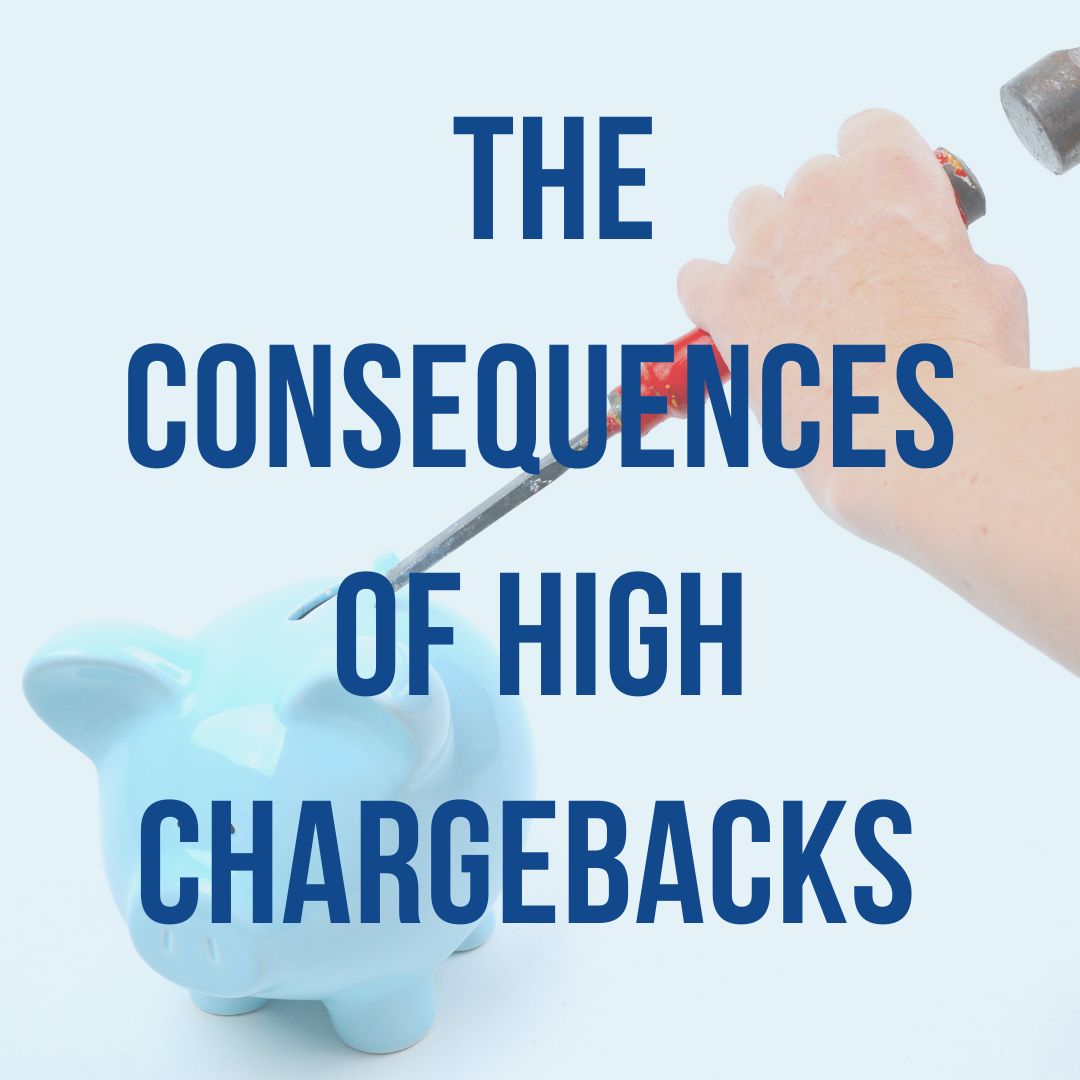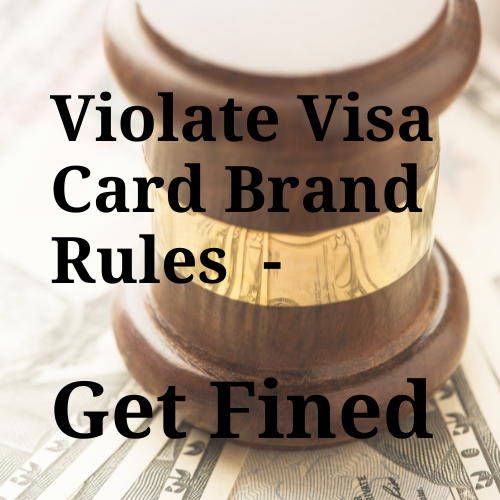Understanding Payment Processing Part 2
 In our last article, we described the various players involved with processing credit card payments. We also talked about what they charge you for and whether you have any control over those fees. If you haven’t read it, you can do so right here. It's a great foundation for understanding your credit card processing fees. It will also help you understand where the fees come from when we begin breaking down the processing statement in today’s article.
In our last article, we described the various players involved with processing credit card payments. We also talked about what they charge you for and whether you have any control over those fees. If you haven’t read it, you can do so right here. It's a great foundation for understanding your credit card processing fees. It will also help you understand where the fees come from when we begin breaking down the processing statement in today’s article.
Today, we will talk about how to read your statement. As we’ve pointed out, processing statements can differ greatly from processor to processor. In addition, there are also different pricing structures that processors can be using. These differences make them a little hard to dissect for someone who’s not doing it every day. For this reason, there is no single method for analyzing a statement. But there are some basic concepts all statements have in common that should help make it more understandable.
In this article, we’ll go over the three main pricing structures used to set credit card processing rates. We’ll show you how to recognize which type of pricing you have. And we’ll show you how to understand your statement so you can tell if you're getting a competitive credit card processing rate.
How to read and understand your credit card processing statement.
First, you will need to gather at least two, if not three months of statements. Most of the time, you won't see the total costs for one month’s processing on only one statement. So if you gather a few consecutive months, you’ll have a better chance to get an accurate monthly cost.
There are two common pricing methods: Interchange-Plus and Tiered or Bundled Pricing. Then there is Flat-rate pricing like you will see with aggregate processors such as Square and Stripe. We will go over each one.
The first pricing statement we’ll go over is an Interchange-Plus pricing statement. But first, a refresher about what “interchange” is. Remember, Interchange is the wholesale price for processing credit cards. It is a combination of the fees charged by the card brands and the card-issuing banks. The card brands set the interchange rates, and they are not negotiable. They are the base of everyone’s processing costs.
Interchange-Plus pricing statement:
This is the most straightforward pricing model, so it’s the easiest to understand. But the statement itself can look more confusing at first glance. This is because you see a line item for the interchange rate for every type of card or category there is. And there are hundreds of different card types and categories. In addition to there being a different rate for every card type, there are also different rates for how the card is processed.
Your statement will have a rate for each card type that was accepted. And it will have rates for “card present” transactions, and another for card-not-present transactions. For example, you will see one rate for cards that are swiped or dipped into a terminal and another if a card is manually keyed in or for eCommerce.
Don't let that confuse you. Remember, this is the wholesale cost, so you can't change it.
Interchange-Plus pricing means that the merchant service provider is charging you the base cost/rates (Interchange) + their mark-up (Plus). What you need to concern yourself with is the mark-up added to each of these costs. This is great because there is only one rate for the mark-up, and it applies to all card types.
For example, a processor may quote you a rate of 0.5% + $0.10 per transaction. That means they will add 0.5% to each base rate for the card types you processed, plus $0.10 for every transaction.
How to recognize Interchange-Plus pricing.
Interchange Plus pricing is most easily recognized by the long list of itemized interchange charges for each card type you accepted. With this type of pricing, it’s easy to differentiate between the wholesale cost and what your processor is charging you.
This makes it much easier to calculate your effective mark-up. Your effective mark-up gives you the best picture of what the processor is charging you. Knowing it also makes it easier to compare quotes. That’s because you’ll pay the wholesale rates, no matter what merchant service provider you go with.
How to calculate your Effective Mark-up
Don't just rely on the summary section on your statement for the total mark-up. You're going to have to get out your calculator for this. Many statements will leave some additional fees out of the summary section. It’s better to go over your statement and add all the interchange and card brand fees and assessments to get the total wholesale charges. Then, subtract all interchange and card brand fees from your total fees. What you are left with is just the total mark-up. Now you can take that total mark-up and divide it by your total sales and you’ll get your “effective mark-up”.
Calculation: Total mark-up / Total sales = Effective Mark-up
Next we’ll dive into Tiered Pricing structure:
This one is, unfortunately, a lot more convoluted.
With Tiered Pricing, the processor group card types into three separate tiers, each with their own processing rate. So, instead of one mark-up rate over and above Interchange, you have three separate rates. The rate for each tier is the sum of the Interchange rates and the processor’s mark-up. The tiers are referred to as “qualified”, “mid-qualified”, and “non-qualified”. Each of the over 300+ card types will fall into one of these tiers.
With this model, the processor is bundling card types and the interchange fees that go with them and putting them into each tier. Their mark-up is bundled into the rate for that tier. Qualified cards will have the lowest rate, non-qualified cards will cost the most. The processor charges you the rate for all the cards you accept in each tier. They forward on the interchange rate and fees and keep the difference as their processing fee.
The problem with Tiered Pricing is that it is very difficult to know what the processor’s mark-up is. Since you can't see the base rates for the various cards, you can't tell how much of the rate is the mark-up. Remember, every card type has its own interchange rate. Some cards are more expensive than others. Basic credit cards and debit cards have a much lower rate than corporate cards, rewards cards, and miles cards.
Each tier will be priced to cover the most expensive card type that falls into the tier. So if you accept a lot of less expensive card types, you will pay a greater mark-up on those cards.
But that’s not the biggest problem. The processor gets to decide which card types fall into which tier. They can take all the most popular cards and make them fall into a more expensive tier. That means you could be paying much more for most of the cards you accept than you should be. This pricing model allows the processor to hide the true cost of processing from the merchant. This is why Tiered pricing is so deceptive.
How to recognize the Tiered Pricing model.
You will know you are on a Tiered Pricing model when you see the terms “qualified,” “mid-qualified” or “non-qualified” on your statement. You may also see the same rate being used for several different card brands. This is because all of those card brands fall into the tier for that rate.
It is almost impossible to calculate your Effective Mark-up when you are on a tiered pricing structure. Since you cannot tell what portion of the rates are the wholesale fees, you're unable to isolate the mark-up to do the calculation. However, you can still find your overall Effective Rate since you can see your total charges and your total sales. Again, you may need two months’ statements to perform the calculation correctly.
A word about Flat Rate Pricing.
Aggregators such as Square and Stripe use Flat-Rate pricing due to its perceived ease. With flat-rate pricing, the interchange rates, assessments, and the mark-up are all bundled into one rate. The merchant pays that rate no matter what type of card they accept. This is seen as very straightforward and easy to understand at first glance.
But if you process a lot of volume or if most cards you accept are basic credit or debit cards, it can get expensive. Interchange for a basic credit card runs about 1.5% and debit cards are only 0.5%. So when you're paying a 2.9% flat rate with Square, you're paying a considerable mark-up.
Much like tiered pricing, you are unable to see the base costs and therefore cannot tell what the mark-up is. In this case, you must rely on your effective rate calculation to tell if your flat-rate is a competitive one.
Learn to find hidden fees on your credit card processing statement.
 Once you learn to differentiate between the base costs and the mark-up on your statement, it's time to look for hidden and bogus fees. This is where your processing can get expensive, even if your “rate” is great.
Once you learn to differentiate between the base costs and the mark-up on your statement, it's time to look for hidden and bogus fees. This is where your processing can get expensive, even if your “rate” is great.
Keep in mind that you can't trust the section headings or the fee description. Sometimes you will see a fee that has a card brand abbreviation in front of it. That may lead you to believe it is a card brand assessment that is passed on to you. That is not necessarily the case. The total fee may not all belong to the card brand. Your processor could have tacked on a mark-up to the fee.
Another way a processor will try to hide a fee is by dropping it in the middle of a fee section it has nothing to do with. For example, they may put a monthly statement fee right in the middle of a list of card brand fees. You will think it is a wholesale cost, but card brands don't charge monthly statement fees. This is actually a mark-up by the MSP. And it will affect your calculation for your Effective Mark-up.
If you come across fees with a strange name, or you can't figure out what it's for or who it goes to, make your merchant service provider explain it to you. Remember, your rates are not just about your rate, if you know what I mean. Many of these extra fees are negotiable and can have a profound effect on your overall rate. IF you find your credit card processing rates keep going up, these extra fees could be the culprit and there is something you can do about it.
Our payment processing philosophy is a bit different from most payment processors.
At MonerePay, we do things a little differently than traditional Merchant Service Providers. We leverage innovative payment technology to change the fundamental way we bring payment processing to businesses.
As you learned in Part 1, there can be several entities involved with your payment processing. Traditional payment transactions can be routed as many as 6 times before completion. We only need 2. With MonerePay, you have your Acquiring Bank, Processor, Gateway, and Card Issuing Bank all under one roof. That means by consolidating middle-men, we can process payments quickly and securely while also saving you a significant amount in costs.
But that’s not all. We’ve curated a proprietary banking partnership with one of the largest financial institutions in the world. MonerePay and Chase Bank have curated a direct partnership with the intent to redefine merchant services. And it’s this partnership that allows us to offer enterprise level merchant services not common in the industry.
How does this partnership serve your business? By partnering with Chase, we’re able to bypass the interchange on all Chase card transactions. And that’s great for you since Chase holds about 42% of the cardholder market share.
We’re also processing transactions with up to level III transaction data, which further lowers costs. Most payment processors only transmit transactions at Level I.
Fewer hands in the pot, discounted Interchange, and Level III transaction data all add up to significantly streamlined payment processing. And streamlined payment processing is optimized payment processing.
And if that isn't enough, leverage our cutting edge business intelligence reporting to enhance multiple aspects of your business performance.
Get empowered to find a reputable merchant service provider for your payment processing needs.
 Hopefully, this article has brought to light how important understanding your statement and your pricing structure can be to your bottom line. It has shown you the pros and cons of the most common pricing structures used by providers in the industry. And you’ve learned how to calculate both your Effective Rate and your Effective Mark-up. This small bit of knowledge will help you choose the best pricing structure for your business. It will also empower you to suss out hidden fees, allowing you to have more control over your rates.
Hopefully, this article has brought to light how important understanding your statement and your pricing structure can be to your bottom line. It has shown you the pros and cons of the most common pricing structures used by providers in the industry. And you’ve learned how to calculate both your Effective Rate and your Effective Mark-up. This small bit of knowledge will help you choose the best pricing structure for your business. It will also empower you to suss out hidden fees, allowing you to have more control over your rates.
And hopefully, it has shown you how to recognize a reputable merchant service provider that offers transparent rates for your payment processing.
Accepting credit card payments is a must for a successful business model these days. But credit card processing fees take a big bite out of your bottom line. It's important to remember that the bulk of the fees go to the card brands and the card-issuing banks, not your MSP. A reputable merchant service provider will provide their services for a fair and competitive price. They will be more interested in gaining your business for life than gouging you for a quick profit.
Learning to read your statement and understand what you're being charged empowers you with more control over your rates and who you choose to work with.
If you are having a difficult time understanding your statement, call us. We would be happy to go over it line by line with you. We have nothing to hide. At MonerePay, we stand by our promise of transparent pricing.
Each of our staff members is an ETA Certified Payment Professional. Obtaining ETA certification shows that we’ve gained the expertise needed for the products and services we recommend. It also means we adhere to the ETA’s Code of Ethics to conduct ourselves with the utmost professionalism and personal integrity.
If you’re ready to experience truth in credit card processing, give us a call. We’d love to show out what it means to have a true partner in your payment processing needs.

(1).jpg)




